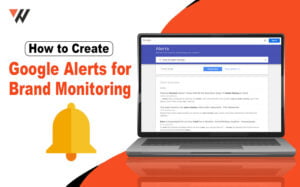In this digital age, the user experience (UX) plays a crucial role in determining the success of any service or product. A user-friendly and well-designed interface can significantly impact the attraction and retention of users, increase customer satisfaction, and ultimately contribute to the accomplishment of business objectives. Whether you’re contemplating a career in design, have a solid foundation in the field, or are a business leader seeking insights into how UX design can improve your organization. This Ultimate UX Guide for Organizations will walk you through the essential techniques and best practices to improve UX and drive overall success.
What is UX Design?
UX design involves crafting seamless experiences that facilitate users in accomplishing their intended tasks effortlessly. While visual design certainly has significance in the process, UX design primarily concentrates on crafting a blueprint for a product’s overall experience. This involves delineating its ecosystem and ensuring the validation of its value. Designers employ empathy while observing, analyzing, and assessing user interaction with a digital product. The UX methodology relies on the principles of user-centred design and design thinking. Design thinking involves:
- They are collaborating with customers.
- They are engaging in structured brainstorming.
- Exploring potential scenarios to envision and continually test ideas with users.
UX Design Process and Methods
The process of UX (User Experience) design involves multiple stages and methods that direct designers in crafting impactful and user-centric experiences. While the particulars may differ based on the project and organization, the subsequent provides a broad outline of the UX design process, along with typical methods utilized at each phase:
- User Research
- Analysis
- Design
- Test
- Build and Iterate

User Research
Before starting any design task, it is crucial to comprehend the identity of your users, their objectives, and the obstacles they face in attaining those objectives. A UX design project typically commences with the identification of a problem. Engaging in user research illuminates issues and constitutes a crucial element of the design journey. It empowers you to steer clear of expensive mistakes and create user-friendly and enjoyable products. UX designers employ various UX research techniques to gain insight into users’ challenges, requirements, and motivations.
Analysis
With research findings in hand, designers amalgamate information through various methods. User personas serve as imaginative representations of potential end users. Designers develop personas by conducting user research and collecting information about attributes like age, requirements, and motivations. Teams throughout the organization can depend on these personas to guide their efforts and guarantee a consistent focus on the organization’s intended customers. To gain a deeper understanding of the user’s point of view, designers can employ empathy maps to visually represent the emotions and sentiments users associate with a product.
Design
The bedrock of User Experience (UX) in product development lies in taxonomy, which involves structuring information into a hierarchical system. The process of organizing content and creating a site map in the industry is known as information architecture, which serves as the foundational structure for any digital product. Wireframes serve as the architectural plans for the screens that make up a product. They provide developers with a foundation to establish the fundamental structure of an application prior to delving into the visual design of UI components.
Read Also: Website Design and Screen Resolution- Everything You Need to Know
Test
Testing prototypes with users serves to validate the design concept to confirm the product aligns with users’ requirements and generates valuable insights for iterative improvements. Referred to as usability testing, this process employs various methods such as A/B testing, eye tracking, heat maps, observations, and interviews. A core usability testing approach involves a facilitator assigning tasks to participants, closely observing their interactions, and seeking insights through targeted questioning. The facilitator acquires valuable insights into the product’s performance, like the users’ ability to fulfil requests, the task’s ease or difficulty, and the participants’ thoughts as they engage with it.
Build and Iterate
After implementing user feedback during prototype testing, UI designers proceed to construct the interface while developers encode the product. UI designers play a crucial role in translating a brand’s identity into digital products and ensuring the usability of the user interface (UI). In this analogy, UX design serves as the framework, while UI design corresponds to the final touches. After a project is live, UX designers gather both quantitative and qualitative data to analyze user behaviour to enable continuous product enhancement through iterative processes.
UX Best Practices
Enhancing the user experience (UX) from good to exceptional involves implementing best practices that prioritize user needs and align with business objectives. These practices not only guide the design process but also contribute to creating intuitive and delightful digital products. Here are a few key principles to consider:
- Establish a Clear Visual Hierarchy
- Prioritize Accessibility
- Beware of Dark Patterns
- Embrace Collaboration
- User Experience Goals
Establish a Clear Visual Hierarchy
The arrangement of content on a screen significantly influences how users process information. A well-defined visual hierarchy directs users toward essential actions or content, facilitating a seamless experience. Designers should consider brand objectives, prioritize elements, and adhere to minimalist design principles to eliminate unnecessary content. Ask yourself, What does the user truly need on the page, and what might overwhelm them with too many options?
Prioritize Accessibility
Digital products should be accessible to all users, and inclusive design should be integral to the entire design process, from research to testing. Following Web Content Accessibility Guidelines (WCAG) and incorporating design principles such as appropriate font size and contrast ensures that products are welcoming to a diverse audience. Accessibility benefits both users and businesses by broadening engagement.

Beware of Dark Patterns
While UX designers work to fulfil business goals, it’s crucial to avoid dark pattern design solutions that manipulate users into unintended actions. Steering clear of tactics like creating artificial scarcity or making it difficult to cancel subscriptions maintains trust with users. Familiarize yourself with common dark patterns, and focus on cultivating trust by maintaining a consistent brand experience and prioritizing user security.
Embrace Collaboration
Collaboration with diverse teams, including product managers, developers, and business analysts, strengthens the design process. Effective communication and understanding each team member’s role are essential for advocating UX best practices. Framing UX issues as business risks and finding compromises can lead to solutions that benefit both organizations and users. Nurturing strong client-designer relationships through communication and understanding motivations contributes to successful outcomes.
Read Also: Website Development Checklists Everyone Should Know
User Experience Goals
Skilled UX designers play a pivotal role in helping companies understand user perspectives and optimize digital products. By focusing on stakeholder and end-user objectives, designers create seamless journeys based on data and feedback. The result is an intuitive design with clear calls to action that strengthens the user’s relationship with the brand. The ultimate goal is to make products easy and delightful to use, ensuring users navigate without frustration, only experiencing satisfaction.
Final Verdicts
The Ultimate UX Guide for Organizations serves as a comprehensive roadmap for navigating the intricacies of user experience design in the digital age. By emphasizing the significance of crafting seamless and user-friendly interfaces, this guide equips individuals pursuing design careers, seasoned professionals, and business leaders with essential techniques and best practices. From understanding the UX design process and methods to implementing key principles and fostering collaboration, the guide underscores the pivotal role of user-centred design in achieving organizational success.





